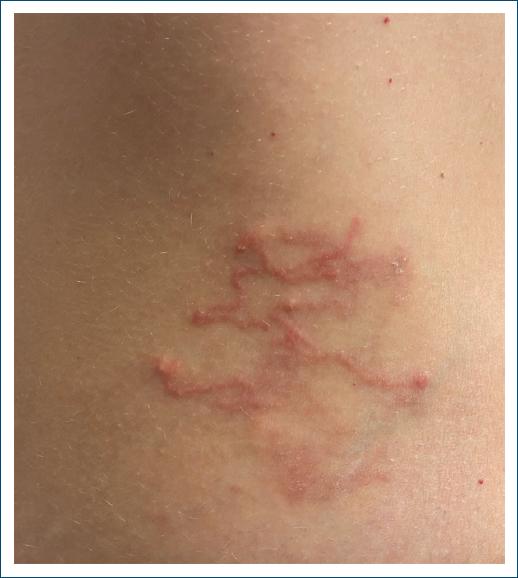A 28-year-old woman with no relevant past medical history presented to the Dermatology department with pruriginous, slowly growing lesions on her right abdominal flank. The lesions had been first noted a week earlier, after returning home from a trip to Mexico. She denied other symptoms.
Clinical examination revealed several erythematous papules and plaques with a serpiginous distribution affecting the right abdominal flank (Fig. 1). The remaining physical examination was unremarkable. Based on clinical presentation and considering the recent travel history, a diagnosis of cutaneous larva migrans was made.
The patient was treated with single dose oral ivermectin (200 mcg/kg), with full resolution of lesions at 1-month follow-up.
Cutaneous larva migrans is an infection caused, most frequently, by Ancylostoma braziliense (a hookworm transmitted by soil contaminated with feces of cats or dogs)1,2. Although worldwide distributed (and with some reported autochthonous cases in Europe3), infections are more frequently found in tropical/subtropical countries in Central and South America and Asia1.
After penetrating the skin, the larva undergoes epidermal migration, giving rise to the characteristic clinical appearance. The lower limbs (especially the feet) are the most common locations for lesions, but the trunk, as in our patient, can be affected in up to 7% of cases4. Exceptionally, hematogenous dissemination to the lungs can occur4.
Although self-limited, treatment with oral albendazole or ivermectin relieves pruritus and decreases the chance of bacterial superinfection1. In cases where oral therapy is not possible, patients can be treated with topical treatment using ivermectin 1% or thiabendazole 15% cream3,5.















